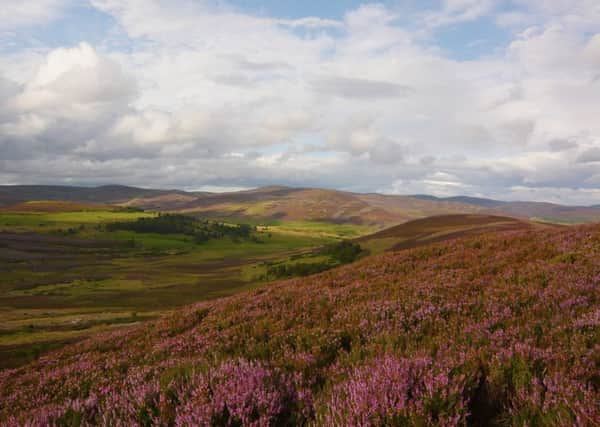Bruce Russell: Managed moorland environment vital to many more species than grouse


At the end of July 2019 the Game & Wildlife Conservation Trust (GWCT) commissioned market research company fastmap to undertake a survey of 1,000 Scots with the response weighted to match Scottish demographics by age and gender (including those without internet access) to give us, effectively, a people’s view of heather moorland. What they told us in response was not, in our view, a surprise. Our suspicion was that an outstanding majority really do value and appreciate this resource and the benefits it brings, and we were not wrong.
Scotland’s heather moorland is one of the country’s most characteristic habitats. Heather, berries and grassland provide around 50 per cent of land cover of Scotland’s uplands – so much so that in landscape terms heather moorland is often described as ‘iconic’. We asked how positively respondents associated heather moorland with the Scottish landscape.
Advertisement
Hide AdAdvertisement
Hide AdHeather moorland is a managed environment that provides habitat for many upland species, birds, animals, and plant life including lapwing, mountain hares and rare bumblebees. We asked whether respondents agreed that Scotland’s heather moorland is important in providing a valuable habitat for a wide range of biodiversity.
Scotland’s uplands and heather moorland are a source of healthy food including Scotch lamb, game (such as venison and grouse), and honey as well as other products. We asked whether respondents recognised Scotland’s uplands as a source of healthy food.
Scotland’s heather moorland is a managed landscape, a cultural landscape, with management in the form of deforestation starting as early as the Mesolithic period (10,000-8,000 BC). Management means jobs, and today the uplands provide valuable rural employment, often in remote areas, for shepherds and hill farmers, gamekeepers and stalkers, among others. So, finally we asked how important respondents thought Scotland’s moorland is as a source of rural employment.
And what did we find out?
That the vast majority of Scottish citizens (89 per cent) have either a positive or very positive association between heather moorland and the Scottish landscape, and that an even greater majority (92 per cent) agree or agree strongly that Scotland’s heather moorland is important in providing a valuable habitat for a wide range of biodiversity.
A lesser proportion (69 per cent) either recognised or well recognised the Scottish uplands as a source of healthy food (11 per cent did not make this connection). And a majority (73 per cent) recognised Scottish heather moorland as an important source of rural employment.
So, what are our conclusions in terms of this research? Scots value heather moorland as a managed landscape. It exists because of the work that is done by upland land managers to retain it, whether through grazing or burning, but its main economic driver and the incentive for investment in it and management of it is grouse shooting. Take that away and the heather moorland that we have and the benefits that it delivers by way of biodiversity, food and rural employment, will diminish too.
Scotland values it’s heather moorland, so the results of this poll tell us. And we suspect that visitors to Scotland would have the same view. Yet the activities that maintain heather moorland are under close scrutiny at present, from the Werritty Review of grouse moor management commissioned by the Scottish Government, and the final report of the Langholm Moor Demonstration Project. Both of these will have a bearing on how we view these national assets, their value in terms of economic and natural capital, and how we use them in the future.
Our warning is that we need to be wary about what we wish for this national asset if we want to preserve it for future generations.
Bruce Russell, Director Scotland, Game & Wildlife Conservation Trust